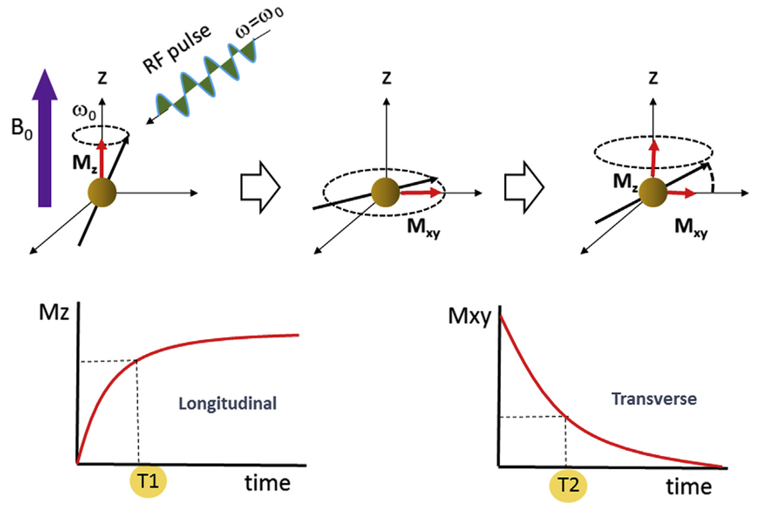Protein nuclear magnetic resonance (NMR) spectroscopy is a discipline developed since the 1980s, mainly used to analyze the solution structure of biological macromolecules. In 1985, a research team led by Dr. Kurt Withrich, a Swiss scientist, analyzed the solution structure of proteins for the first time. Since then, NMR technology has been rapidly developed, becoming the second technology capable of measuring the three-dimensional structure of proteins with high precision after X-ray crystal diffraction technology.
The phenomenon of NMR originates from the precession of the spin angular momentum of the nucleus under the action of an external magnetic field.
According to the principles of quantum mechanics, nuclei, like electrons, also have spin angular momentum. The specific value of its spin angular momentum is determined by the spin quantum number of the nucleus. The experimental results show that different types of nuclear spin quantum numbers are also different:
- A nucleus with an even number of mass and proton has a spin quantum number of 0, such as 12C, 16O, 32S, etc. Such nuclei have no spin phenomenon and are called non-magnetic nuclei.
- A nucleus with an odd mass number and a half integer spin quantum number, such as 1H, 19F, 13C, etc., whose spin quantum number is not zero, is called a magnetic nucleus.
- A nucleus with an even mass number and an odd number of protons has an integer spin quantum number. Such nuclei are also magnetic nuclei.
But so far, only nuclei with a spin quantum number equal to 1/2 can their NMR signals be used. The most often used nuclei are: 1H, 11B, 13C, 17O, 19F, 31P.
Since the nucleus carries an electric charge, when it spins, a magnetic moment is generated. The direction of this magnetic moment is the same as the spin direction of the nucleus, and its magnitude is proportional to the spin angular momentum of the nucleus. When the nucleus is placed in an external magnetic field, if the direction of the nuclear magnetic moment is different from the direction of the external magnetic field, the nuclear magnetic moment will rotate around the direction of the external magnetic field. This phenomenon is similar to the swing of the rotating shaft of a top during its rotation, which is called precession. Precession has energy and a certain frequency.

The frequency of the nucleus precession is determined by the strength of the applied magnetic field and the nature of the nucleus itself. In other words, for a particular atom, the frequency of its nuclear spin precession is fixed in an external magnetic field of a certain strength.
The energy of the nucleus precession is related to the magnetic field, the magnetic moment of the nucleus, and the angle between the magnetic moment and the magnetic field. According to the principle of quantum mechanics, the angle between the nuclear magnetic moment and the applied magnetic field is not continuously distributed, but is determined by the magnetic quantum number of the atomic nucleus. The direction of the nuclear magnetic moment can only jump between these magnetic quantum numbers, but cannot change smoothly, thus forming a series of energy levels. When the nucleus receives energy input from other sources in an external magnetic field, an energy level transition occurs, that is, the angle between the magnetic moment of the nucleus and the external magnetic field changes. This energy level transition is the basis for obtaining nuclear magnetic resonance signals.
In order for the precession of the atomic nucleus spin to undergo an energy level transition, it is necessary to provide the energy required for the transition to the nucleus. This energy is usually provided by an external radiofrequency field. According to the principles of physics, when the frequency of the external radiofrequency field is the same as the frequency of the atomic nucleus spin precession, the energy of the radiofrequency field can be effectively absorbed by the atomic nucleus to assist in the energy level transition. Therefore, a specific atomic nucleus, in a given external magnetic field, only absorbs the energy provided by a specific frequency radio frequency field, thus forming a nuclear magnetic resonance signal.
Creative Proteomics can provide customers with high-quality nuclear magnetic resonance analysis services, which can be applied to scientific research in life sciences and biopharmaceuticals.






